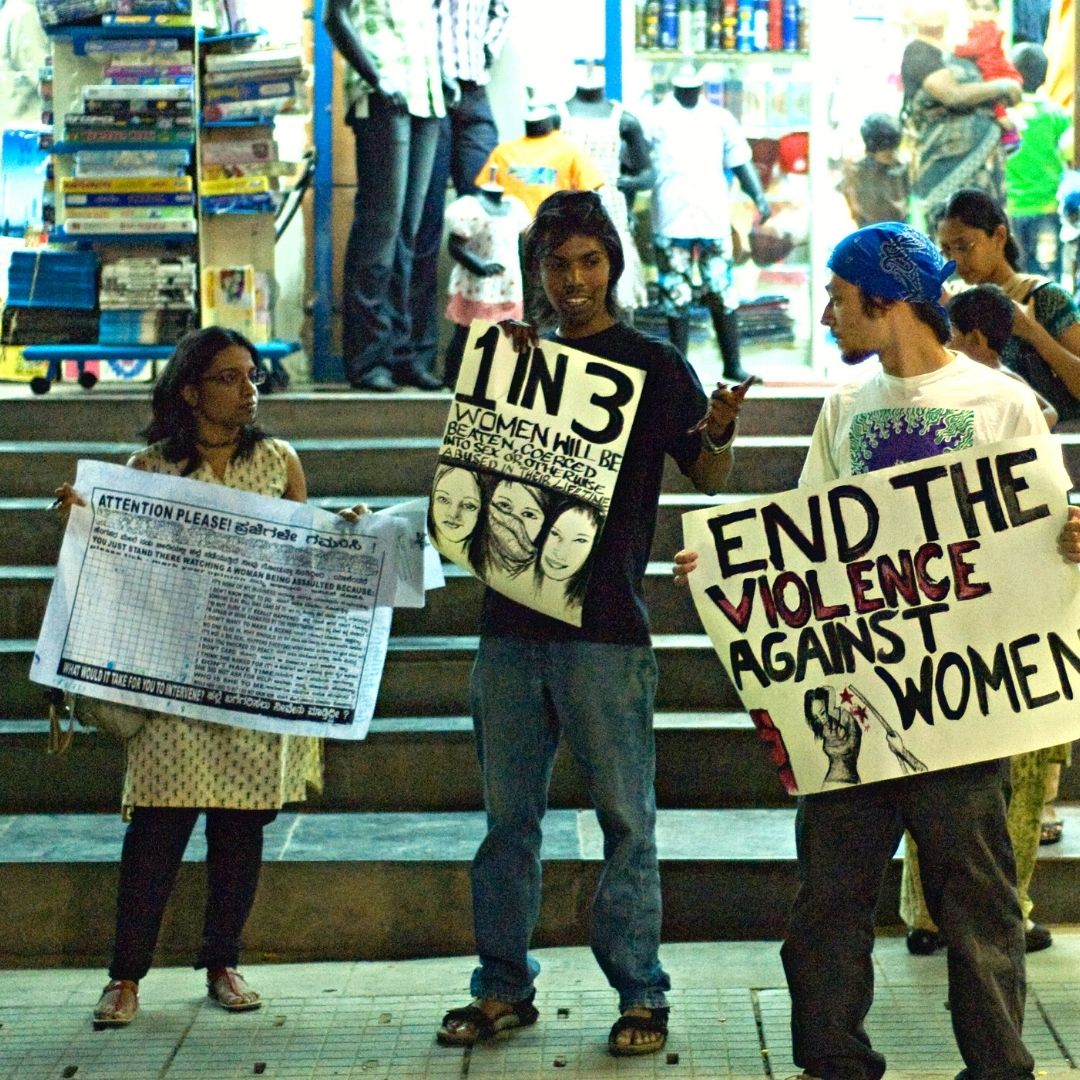
Image Credits: Wikimedia (Representational)
Opinion: Patriarchy, Power Is Root Cause Of Rape Culture In India
India, 8 Jan 2022 5:42 AM GMT | Updated 8 Jan 2022 6:15 AM GMT
Editor : Palak Agrawal |
Palak a journalism graduate believes in simplifying the complicated and writing about the extraordinary lives of ordinary people. She calls herself a " hodophile" or in layman words- a person who loves to travel.
Creatives : Palak Agrawal
Palak a journalism graduate believes in simplifying the complicated and writing about the extraordinary lives of ordinary people. She calls herself a " hodophile" or in layman words- a person who loves to travel.
The country has staged protests against every heinous crime that has outraged the modesty of a woman carrying out candlelight marches, sit-in protests, flagging banners and asking stringent judicial actions against the perpetrators. The clamour and frenzy die down a slow death within a fortnight, and another case overpowers the former until people completely forget about the issue.
Rape is the fourth most common crime against women in India, which has caught the length and breadth of the country under its talons, shrinking it to a mere unsafe geographical landscape for women.
Fear of being groped, eve-teased, and sexually assaulted has circumcised so deep in the psyche of the country's women that stepping out for basic errands requires women to think twice especially in rural India.
Even in broad daylight, the lurking gazes on the street sometimes follow with vile comments. A strange hand that reaches out to grope and an unsettling flinch from stepping out at midnight to escape the possibility of a mishap has been a part of the everyday life of Indian women.
Let's Take A Look At The Data
According to the National Crime Records Bureau's (NCRB) data, 32,033 rape cases were registered in 2019—88 cases on an every day basis. Of these, 30165 rape cases were committed by perpetrators were known to the victims.
The share of minor victims or below 18 the legal age of consent stood at 15.4%. Rape incidents by juveniles remained high in India, with three minors being arrested for rape, assault and attempted violence on women and girls each day in 2019.
During 2020, 77 rape cases were reported in the country every day, totalling 28,046 such incidents during the year.
Only cases such as Nirbhaya and the Kathua rape case are able to make national headlines. As per reports, a staggering 99.1% of sexual violence cases go unreported.
Journalists Pramit Bhattacharya and Tadit Kundu compared the data on actual experiences of crime survivors reported by the National Family Heath Survey (NFHS) with that of crime incidents recorded by the police and compiled by the NCRB to reach the conclusion.
They conducted a detailed analysis to highlight that in most such cases, the perpetrator is the husband of the victim.
More importantly, an average Indian woman was 17 times more likely to face sexual violence from her husband than from others, the analysis revealed.
Taking A Closer Look
The country has staged protests against every heinous crime that has outraged the modesty of a woman carrying out candlelight marches, sit-in protests, flagging banners and asking for stringent judicial actions against the perpetrators. The clamour and frenzy die down a slow death within a fortnight, and another case overpowers the former until people completely forget about the issue.
A similar approach to crime resurfaces in another rape case unless it also meets the fate of oblivion.
To understand the root cause of the crime and to locate the factor that enables a perpetrator to outrage the modesty of women and commit a crime leaving a woman scarred, several discourses need to be put in place.
The most basic of it all is 'Sex Education'. Primarily it is a taboo topic in the country, which is talked about in a muted fashion. While being brought up, girls are conditioned to be ashamed of their bodies while boys receive their half-baked rusted sex education through several unreliable sources. That leads them astray.
Moreover, traditional masculine norms function in a way that promotes men's dominance and women's subordination. Sexual aggression is touted to be one of the ways for maintaining this dominance.
In an iconic 1975 book, Against Our Will: Men, Women & Rape, eminent feminist Susan Brownmiller argues that rape is nothing more or less than a conscious process of intimidation. All men keep all women in a state of fear.
The same tactics of establishing power through rape are infamously prevalent in caste and communities where women are seen as 'gatekeepers of honour' of a community, the key to social status, if they are violated, the entire community is defiled.
Nicholas Groth, an American psychologist who specialises in sexual abuse and is the author of several books related to that topic, has described three types of rapists.
There are three types of rapists —Power rapist who fantasizes about rape to assert their competency by using verbal threats, intimidation with a weapon and use force to subdue the victim in a way that feeds their issue of mastery, strength.
The second category is Anger rapist. These perpetrators use profane language and hurt their victims through physical violence; for these perpetrators, rape is a tool to overpower and degrade their victims. Third, comes the Sadist rapist, one who eroticize pain by inflicting distress and aggression, which involves extensive, prolonged torture. The offender takes pleasure in intentionally maltreating the victim.
Patriarchy---The Root Cause?
Everything related to sexual violence comes down to nurture. The 'lynch the rapist' 'hang the rapist' trope need to exit from the subject matter. Looking at it from the psychopathology model, a rapist has a mental aberration, childhood trauma, and most of them are under substance abuse, from the feminist model.
A rapist is a product of patriarchy. The patriarchal environment that nurtures these men primarily keeps them off of the fundamental knowledge of social, cultural, behavioural etiquette of a civil society resulting in which they imbibe the rotten values of patriarchal society and further commit crimes of rape.
Also Read: 'Lifetime Commitment': Same-Sex Doctors Set To Tie The Knot In Goa
 All section
All section













